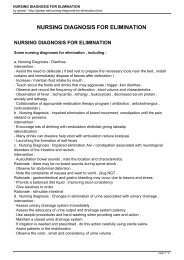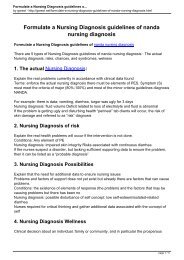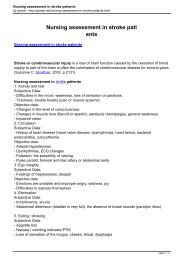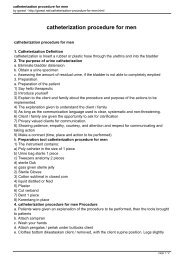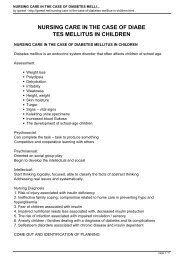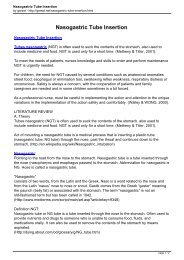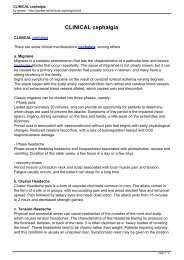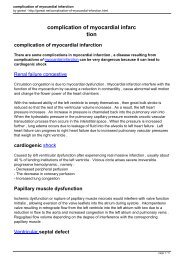CLASSIFICATION OF LUNG CANCER, Cl inical manifestations OF LUNG CANCER
You also want an ePaper? Increase the reach of your titles
YUMPU automatically turns print PDFs into web optimized ePapers that Google loves.
<strong>CLASSIFICATION</strong> <strong>OF</strong> <strong>LUNG</strong> <strong>CANCER</strong>, <strong>Cl</strong><strong>inical</strong> ma...<br />
by garest - http://garest.net/classification-of-lung-cancer-cl<strong>inical</strong>-<strong>manifestations</strong>-of-lung-cancer.html<br />
<strong>CLASSIFICATION</strong> <strong>OF</strong> <strong>LUNG</strong> <strong>CANCER</strong>, <strong>Cl</strong><br />
<strong>inical</strong> <strong>manifestations</strong> <strong>OF</strong> <strong>LUNG</strong> <strong>CANCER</strong><br />
<strong>CLASSIFICATION</strong> <strong>OF</strong> <strong>LUNG</strong> <strong>CANCER</strong>, <strong>Cl</strong><strong>inical</strong> <strong>manifestations</strong> <strong>OF</strong> <strong>LUNG</strong> <strong>CANCER</strong><br />
<strong>LUNG</strong> <strong>CANCER</strong> is a malignancy of the lung tissue, Lung cancer is an abnormality of the cells –<br />
cells undergoing proliferation in the lungs<br />
<strong>CLASSIFICATION</strong> <strong>OF</strong> <strong>LUNG</strong> <strong>CANCER</strong><br />
<strong>Cl</strong>assification according to WHO Pleura and Lung Neoplasms – Lung (1977):<br />
1. Bronkogenik carcinoma.<br />
a. Epidermoid carcinoma (carcinoma).<br />
Cancer is derived from the surface of the bronchial epithelium. Epithelial changes including<br />
metaplasia or dysplasia caused by long-term smoking, typically precedes the onset of tumors.<br />
Centrally located around the hilum, and protruding into the major bronchi. Diameter tumors<br />
rarely exceed a few centimeters and are likely to spread directly to the hilar lymph nodes, chest<br />
wall and mediastinum.<br />
b. Small cell carcinoma (oat cell included).<br />
Usually located around the middle of the main branches arising from this bronki.Tumor cells –<br />
Kulchitsky cells, the normal component of the bronchial epithelium. Formed out of the cell – a<br />
small cell with a nucleus and cytoplasm concentrated hiperkromatik bit. Early metastasis to the<br />
mediastinal and hilar lymph nodes, as well as haematogenous spread to the organs – organs<br />
distal.<br />
c. Adenocarcinoma (including alveolar cell carcinoma).<br />
Cellular arrangement shows such as bronchial glands and may contain mucus. Most arise in<br />
the peripheral bronchial segments and sometimes – sometimes can be associated with local<br />
scarring of the lungs – pulmonary and chronic interstitial fibrosis. Lesions often spread through<br />
the blood and lymph vessels in the early stages, and still do not show cl<strong>inical</strong> symptoms –<br />
symptoms until the occurrence of distant metastases.<br />
d. Large cell carcinoma.<br />
Is a cell – malignant cells were large and very poorly differentiated with a large cytoplasm and<br />
nucleus size wide – range. Cells – these cells are likely to arise in the lung tissue – peripheral<br />
lung, grows quickly with extensive and rapid deployment to places – places far away.<br />
e. Combined adenocarcinoma and epidermoid.<br />
f. Others – others.<br />
1). Carcinoid tumors (bronchial adenoma).<br />
2). Bronchial gland tumors.<br />
3). Papillary tumors of the epithelial surface.<br />
4). Tumor mix and Karsinosarkoma<br />
5). Sarcoma<br />
6). Not classified.<br />
7). Mesotheliomas.<br />
8). Melanoma.<br />
(Price, Pathophysiology, 1995).<br />
page 1 / 2
Powered by TCPDF (www.tcpdf.org)<br />
<strong>CLASSIFICATION</strong> <strong>OF</strong> <strong>LUNG</strong> <strong>CANCER</strong>, <strong>Cl</strong><strong>inical</strong> ma...<br />
by garest - http://garest.net/classification-of-lung-cancer-cl<strong>inical</strong>-<strong>manifestations</strong>-of-lung-cancer.html<br />
<strong>Cl</strong><strong>inical</strong> <strong>manifestations</strong> <strong>OF</strong> <strong>LUNG</strong> <strong>CANCER</strong><br />
1. Early symptoms.<br />
Local stridor and dyspnea possibly due to mild bronchial obstruction.<br />
2. Common symptoms.<br />
a. Cough<br />
Possible due to the irritation caused by the tumor mass. Cough started as a dry cough without<br />
sputum form, but evolved to the point where the molded thick and purulent sputum in the<br />
respond to secondary infections.<br />
b. Hemoptysis<br />
Sputum blushed because sputum blood through the surface ulcerated tumors.<br />
c. Anorexia, fatigue, weight loss.<br />
http://garest.net | free Online nursing, online classes for nursing<br />
page 2 / 2




